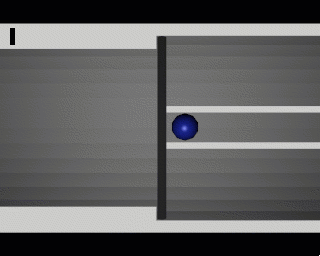Here are a couple of diagrams which demonstrate how the gun works.
This is a simple diagram of the gun. There are several important
parts to notice. From left to right...
- The ball valve on the back allows you to release pressure.
- The small intake valve can be hooked to an air compressor or
a bike pump.
- The separator between chambers is a stiff (yet flexible)
rubber sheet. It acts as a diaphragm.
- The main pressure chamber should be 3-4 times the diameter of
your barrel.
- The barrel extends inward all the way to the diaphragm.
Click to get a bigger version.

 |
This animation of the diaphragm shows how it works.
- Gun is loaded, with no pressure. The release valve is shut.
- Pressure is pumped in. The two air chambers equalize, because
the pressure leaks around the diaphragm.
- Pressure stays in. The barrel is a "low-pressure" zone, and
sucks the diaphragm toward it. This keeps it sealed.
- Open the release valve, and the first chamber depressurizes.
This sucks the diaphragm away from the barrel, so the air
can escape, firing the bullet.
- Gun is empty and depressurized.
|


